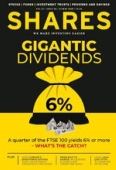Archived article
Please note that tax, investment, pension and ISA rules can change and the information and any views contained in this article may now be inaccurate.
Is it time to switch from growth to value strategies?

Growth and momentum strategies have, by and large, been the only game in town for the last five years. Something evidenced by the meteoric rise of the NYSE Fang+ Index.
Established in 2014, this benchmark contains 10 high-octane growth stocks – America’s Facebook, Amazon, Apple, Netflix, Alphabet (the parent of Google), NVIDIA, Tesla and Twitter and China’s Baidu, Tencent and Alibaba.
Not all investors will have the time or inclination to examine the shades of grey that characterise the different Fang+ names. But they will know that ‘growth’ has left ‘value’ for dead. The questions to address now are whether this is going to change and – if so – when and why?
ONE-WAY TRAFFIC
There are two inter-related reasons for the predominance of growth strategies over the past decade.
First, economic growth has been modest at best, at least in the West, since the end of the 2008 financial crisis. Any company capable of providing growth in such an environment has thus become highly prized, by virtue of their relative scarcity.
Second, interest rates remain anchored at or near rock-bottom levels – even US interest rates seem destined to top out at 2.5% after the Federal Reserve’s policy U-turn back in January. This has three effects.
It encourages – or even obliges – investors to take more risk in search of a return on their money. This may make them more willing than usual to back companies that are growing their customer base and revenues but may still be in the red (and could remain there for a while yet) as there is less of an opportunity cost involved.
Discounted cash flow (DCF) valuations for growth companies’ equity are boosted by low interest (discount) rates.
The combination of these two provides a deep pool of capital which start-ups can tap should it take longer to reach profit than expected and alleviates the pressure to hit it big straight away.
The next chart divides the value of the value index by the value of the growth index. If the line is rising then value is outperforming. If the line is falling, then growth is outperforming.
Growth stocks wobbled in the second half of 2018 as the Federal Reserve forced through a quartet of interest rate increases last year and value stocks began to briefly outperform. However, no sooner had the Fed backtracked in January – inspiring monetary policy pauses everywhere from the UK to the EU, Canada, Australia and New Zealand – than growth stocks took flight again.
RECIPE FOR CHANGE
Sharp-eyed investors will note from the first chart that the NYSE Fang+ index has failed to recapture last year’s high and begun to slide again. This is not, however, offering succour to value-seekers, especially in the UK, where the MSCI UK value index trades below its summer 2007 peak.
What is probably really needed for value to come into fashion may be some good, old-fashioned GDP growth with a dose of inflation thrown in. This would help unloved cyclical firms boost profits, generate extra cash and pay down debt or increase dividends. It would also mean that growth is easier to find, at least in nominal terms, and imply that the scarcity premium attached to the Fang+ names is no longer merited.
A study of the past decade suggests that value names do show more signs of life when inflation is accelerating. With oil prices staying firm, central banks now discussing letting inflation run above target for a while and politicians leaning away from austerity and toward fiscal stimulus, the eventual return of inflation may not be quite as fantastical as it sounds today.
Important information:
These articles are provided by Shares magazine which is published by AJ Bell Media, a part of AJ Bell. Shares is not written by AJ Bell.
Shares is provided for your general information and use and is not a personal recommendation to invest. It is not intended to be relied upon by you in making or not making any investment decisions. The investments referred to in these articles will not be suitable for all investors. If in doubt please seek appropriate independent financial advice.
Investors acting on the information in these articles do so at their own risk and AJ Bell Media and its staff do not accept liability for losses suffered by investors as a result of their investment decisions.

 magazine
magazine













